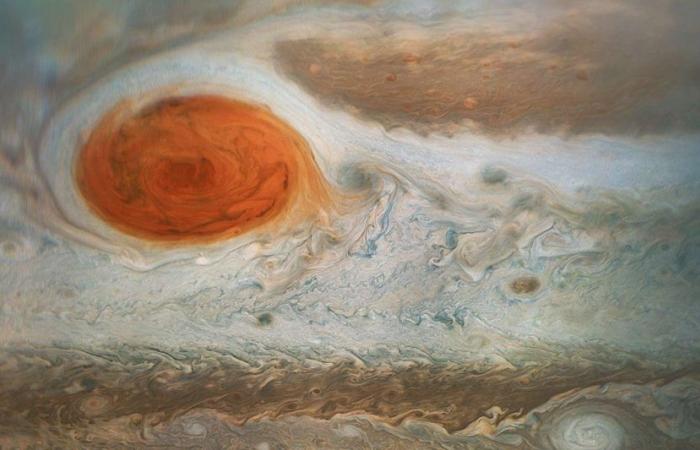The Great Red Spot. He is undoubtedly one of the most emblematic figures and, without a doubt, the greatest of stormsstorms known about our Solar System. The story goes that it was observed in theatmosphereatmosphere of JupiterJupiter for the first time by Jean-Dominique CassiniJean-Dominique Cassiniand astronomerastronomer of Italian origin then naturalized French. It was in 1665.
Remember that the Great Red Spot extends over a diameter approximately equal to that of our Earth. On its periphery, the ventsvents blow up to 450 km/h. And Cassini and his contemporaries nicknamed it the ” Permanent stain “ because they had observed it recurrently until 1713. By then, however, they had lost track of it. Until 1831. Enough to push today’s astronomers to wonder if they are still observing Cassini’s Great Red Spot.
A Great Red Spot that continues to amaze astronomers
To find out, researchers from the University of the Basque Country (Spain) dissected historical sources to analyze the size, structure and location of Jupiter’s Great Red Spot over time. In the Geophysical Research Lettersthey detail their work and come to an astonishing conclusion. “It is very unlikely that the current Great Red Spot corresponds to the “Permanent Spot” observed by Cassinithey declare in a press release. This certainly disappeared between the middle of the 18th centurye and the 19th centurye century, in which case we can now say that the longevity of Jupiter’s Great Red Spot exceeds 190 years. »
Thanks to digital simulationsdigital simulations, the researchers also tested the hypotheses put forward so far for the formation of this Great Red Spot. Astronomers believe that it could have formed following a gigantic superstorm, similar to those sometimes observed on SaturnSaturn, Jupiter’s twin planet. It could also have appeared as a result of the merger of several smaller vortices produced by wind shear from intense wind currents that flow parallel to each other, but alternating in direction with the latitudelatitude. Jupiter’s Great Red Spot could even be the result of wind instability which could produce an elongated atmospheric cell.
What will become of Jupiter’s Great Red Spot?
Researchers from the University of the Basque Country indicate that, although a anticycloneanticyclone forms in the first two cases, it differs in terms of shape and dynamic properties from those of the Great Red Spot that we currently observe on Jupiter. The instability of the winds, on the other hand, could have produced a “proto-Great Red Spot” which would then have shrunk over time, giving rise to the compact and rapidly rotating storm observed since the end of the 19th centurye century.
Jupiter’s Great Red Spot has never been so small and pale!
It remains to successfully reproduce the observed shrinkage of the Great Red Spot — from some 39,000 kilometers in 1879 to only 14,000 today — over time to understand the physical mechanisms underlying its relative stability. The researchers also plan to predict whether it will disintegrate and disappear when it reaches a size limit. This is perhaps what happened for the ” Permanent stain “ de Cassini…






